Budapest's Great Market Hall: History, Architecture, and Shopping
Walk through those massive neo-Gothic doors of Budapest's Great Market Hall and you'll hit a wall of sights, sounds, and smells that pretty much sums up everything Hungarian. People are chatting everywhere, vendors are calling out prices, and the whole place smells like paprika mixed with fresh bread. We've been here dozens of times and it still gets us excited every single visit.
Locals call it Nagyvásárcsarnok, which is a mouthful, but this place is basically the heart of Budapest. It's the biggest and oldest indoor market in the city, and honestly, it's way more than just somewhere to buy groceries. You get to see how real Hungarians shop and live, plus tourists love wandering around taking photos of everything.
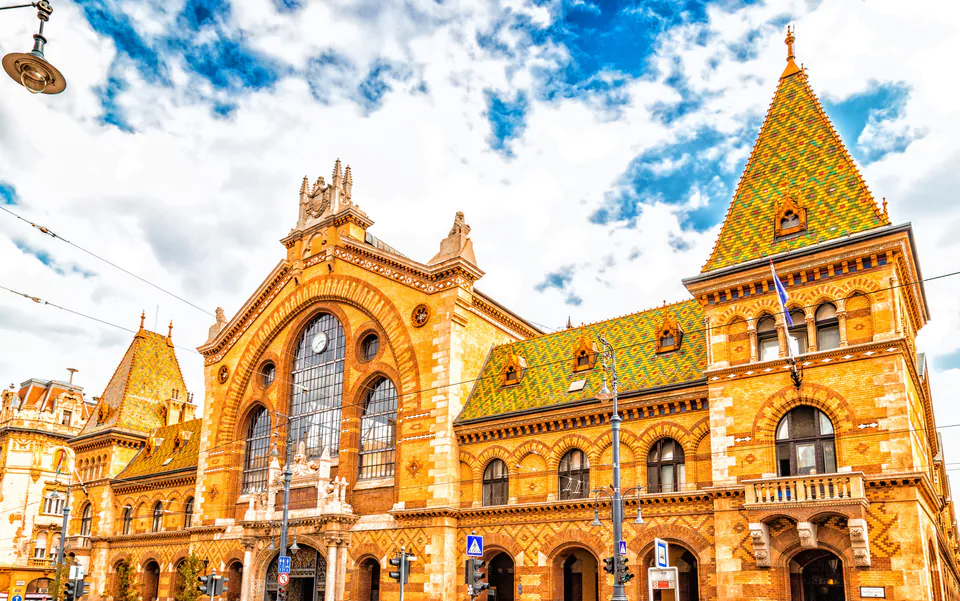
How This Place Became a Budapest Icon
This market has quite a story. They built it back in 1896-1897 when Budapest was part of the Austro-Hungarian Empire. The timing wasn't random either - they wanted to celebrate 1,000 years since Magyar tribes first showed up in this area. So this isn't just any old market, it's basically a monument to Hungarian history.
The spot they picked used to be where customs officials checked goods coming up the Danube River. Makes sense when you think about it - rivers were like highways back then. There are still old tunnels under the market that connected to the river. Now they just use them for garbage collection, but we think it's pretty cool they're still there.
Architect Samu Pecz designed the whole thing in this Hungarian historic style, with some help from Győző Czigler. When we first learned about this, we were surprised how much thought went into making it look specifically Hungarian rather than just copying other European styles.
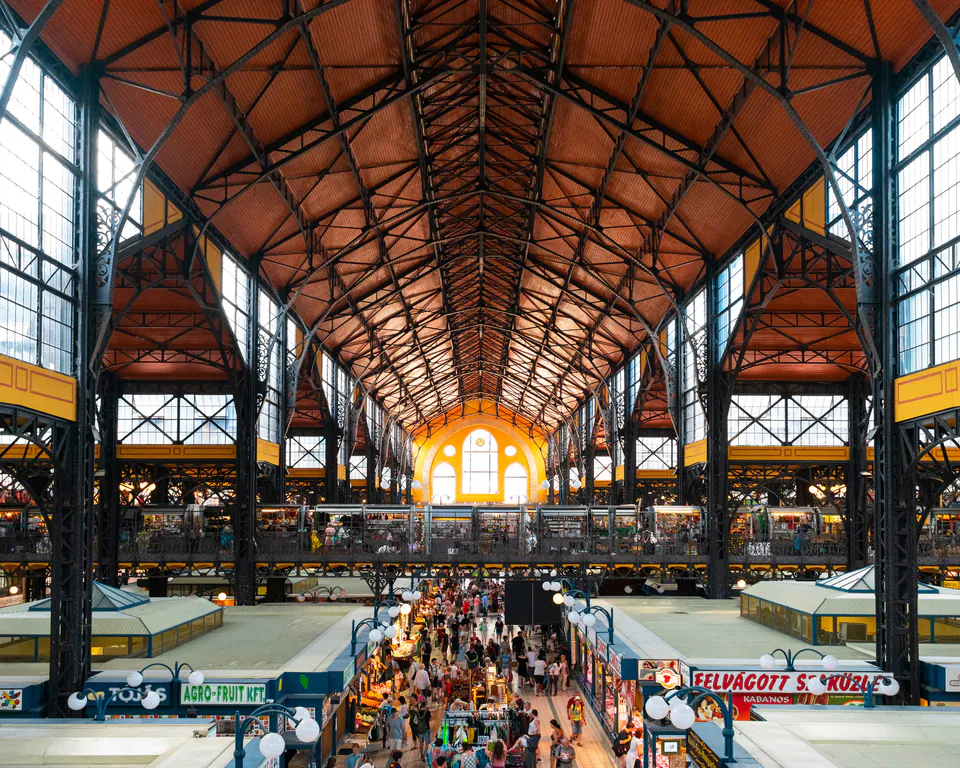
The 20th century was rough on this place. World War II damaged it pretty badly, and then during Communist times things got restricted and run down. But after 1989, they fixed it up really nicely. The renovation in the 1990s brought it back to life, and now it's one of those places every Budapest visitor ends up checking out.
Why the Building Itself is Worth Seeing
Even if you hate shopping, this building is amazing to look at. It's this mix of neo-Gothic and neo-Renaissance styles with pointed arches, little towers, and fancy stone gates. Some people say it looks like a train station from that era, which isn't totally wrong.
The roof is what really catches your eye though. Those colorful tiles are Zsolnay tiles from Pécs, made from this special material called pyrogranit that doesn't get damaged by acid or frost. They look like something you'd see in Burgundy, France, but they're totally Hungarian. We always tell people to look up when they visit because those tiles are incredible.
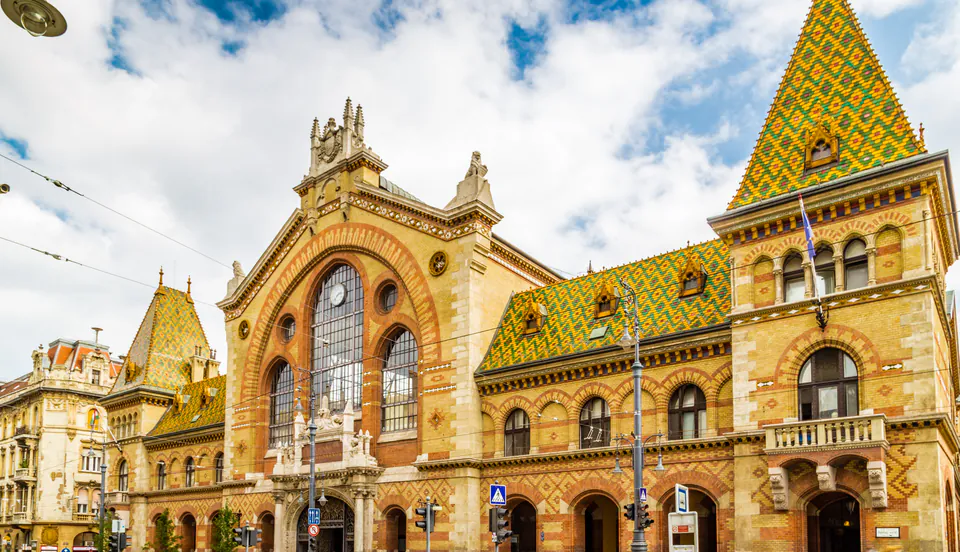
Inside, you've got this huge open space - 10,000 square meters - held up by steel beams and cast-iron columns. The whole design lets them arrange the stalls however they want. People call it "The Church of Food" because it looks like a church inside with the central nave and side aisles. That big window at the main entrance lets in tons of natural light, which makes everything look even more impressive.
Ground Floor: Where the Real Shopping Happens
The ground floor is where locals do their actual grocery shopping. You'll find seasonal fruits and vegetables everywhere, plus fresh and dried Hungarian paprika (which is basically the national spice). The meat section is pretty impressive too - everything from regular cuts to traditional Hungarian sausages and salami that taste way better than anything you'll find at home.
There are cheese vendors with mild to really sharp varieties, bakery stalls with sweet and savory stuff, and candy displays full of traditional Hungarian sweets. We always grab some Túró Rudi when we're here - it's cottage cheese covered in chocolate and sounds weird but tastes great. The spice merchants have everything you need for Hungarian cooking, and you can buy local spirits too.
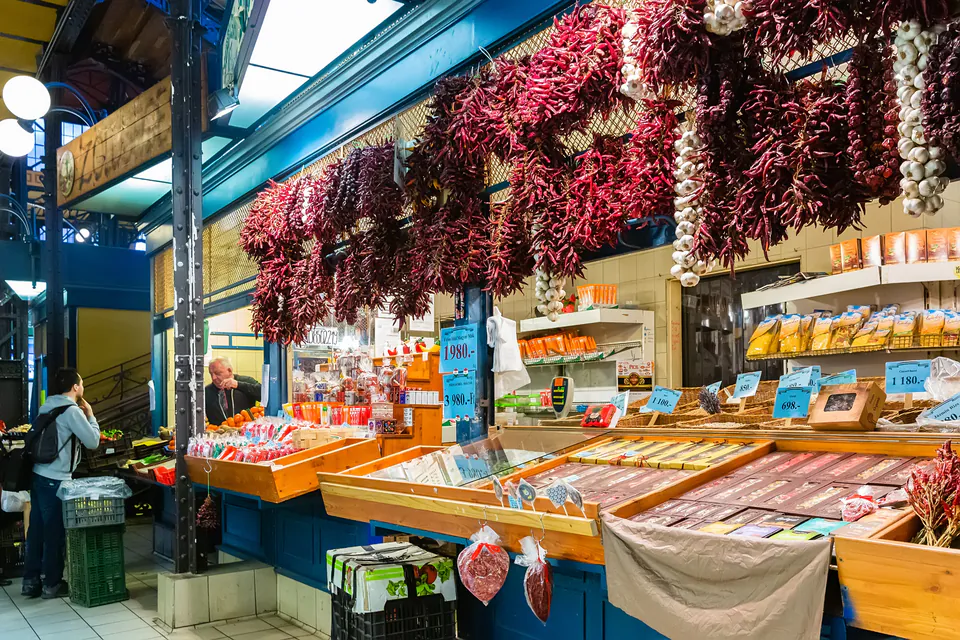
Here's a tip we learned after getting ripped off once: the main central aisle is more expensive than the side aisles. If you want better deals, wander around the edges. Most of the people shopping down here are locals buying stuff for dinner, so you get to see what Hungarians actually eat at home.
First Floor: Tourist Food Heaven
Go upstairs and it's a completely different scene. This is where you get traditional Hungarian street food and buy souvenirs. The smells up here are incredible - stuffed cabbage, goulash soup, meat-filled pancakes, and lángos (which is basically fried bread with toppings that will change your life).
Restaurant Fakanál has traditional Hungarian food and they play gypsy music every day. There are other food stands and cafés too if you just want a quick snack or drink. We usually end up eating way too much when we come here because everything looks so good.
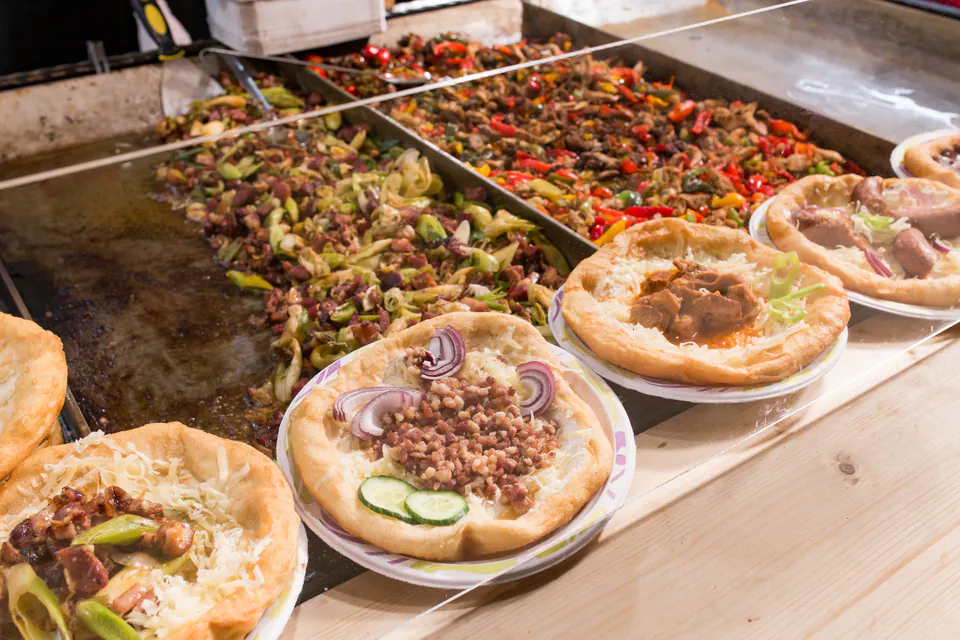
The souvenir shopping up here is actually pretty good. You can find dolls in traditional Hungarian costumes, beautiful folk embroidery on shawls and tablecloths, and those painted Easter eggs that are uniquely Hungarian. The Zsolnay porcelain is gorgeous but expensive. There are leather goods, handmade soaps, wooden toys, and folk art from different regions of Hungary.
Basement: The Weird and Wonderful Stuff
The basement is less exciting to look at but has some interesting stuff. There are fish vendors and tons of stalls selling pickled vegetables, which Hungarians are obsessed with. We're talking pickled cucumbers, cauliflower, cabbage, beets, tomatoes, garlic - basically anything you can pickle, they've pickled it.
There are specialized butcher shops down here and even an Asian supermarket, which surprised us the first time we found it. It's usually less crowded than upstairs, so if you want to browse without getting pushed around, this is your spot.
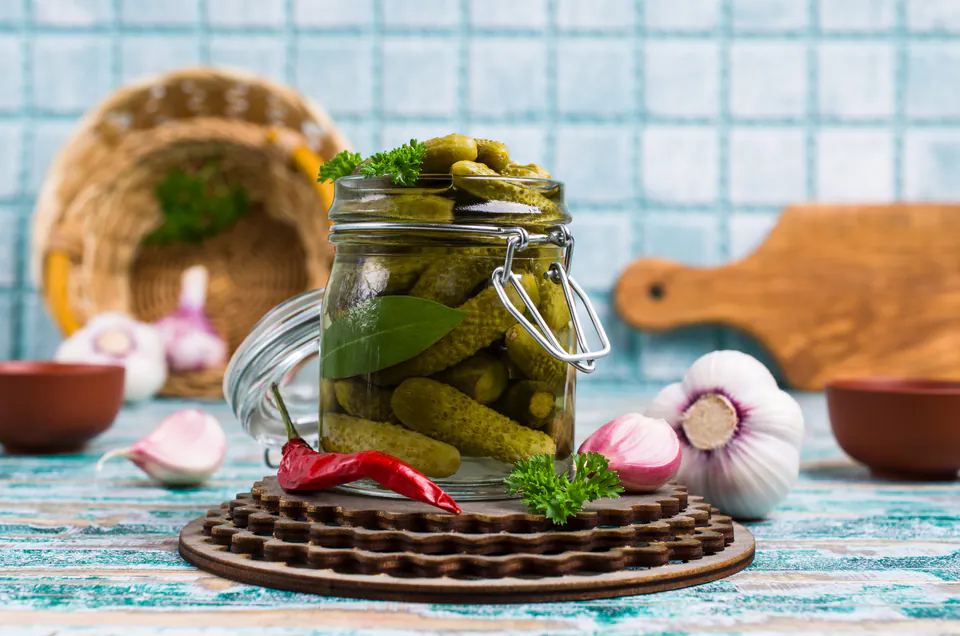
They also do these "Tourism Days" throughout the year where each week focuses on a different country's food and culture. We stumbled into Persian Days once and ended up trying some amazing food we never would have found otherwise.
When to Go and How to Get There
The market is open Monday 6 AM to 5 PM, Tuesday through Friday 6 AM to 6 PM, and Saturday 6 AM to 3 or 4 PM (it varies). Sunday is confusing - some sources say it's closed, others say 10 AM to 4 PM. We always check their website before going on Sunday because we've been burned by this before. They're closed on public holidays.
Great Market Hall Opening Hours
| Day | Opening Hours | Notes |
|---|---|---|
| Monday | 6:00 AM – 5:00 PM | |
| Tuesday | 6:00 AM – 6:00 PM | |
| Wednesday | 6:00 AM – 6:00 PM | |
| Thursday | 6:00 AM – 6:00 PM | |
| Friday | 6:00 AM – 6:00 PM | |
| Saturday | 6:00 AM – 3:00/4:00 PM | Check official website |
| Sunday | Closed / 10:00 AM – 4:00 PM | Verify before visiting |
Getting there is super easy. The address is Vámház krt. 1-3, 9th district, Pest. Tons of trams stop at Fővám tér station right next to the market - lines 2, 47, 47B, 48, and 49. Trolleybus 83 goes there too, plus buses 15 and 115.
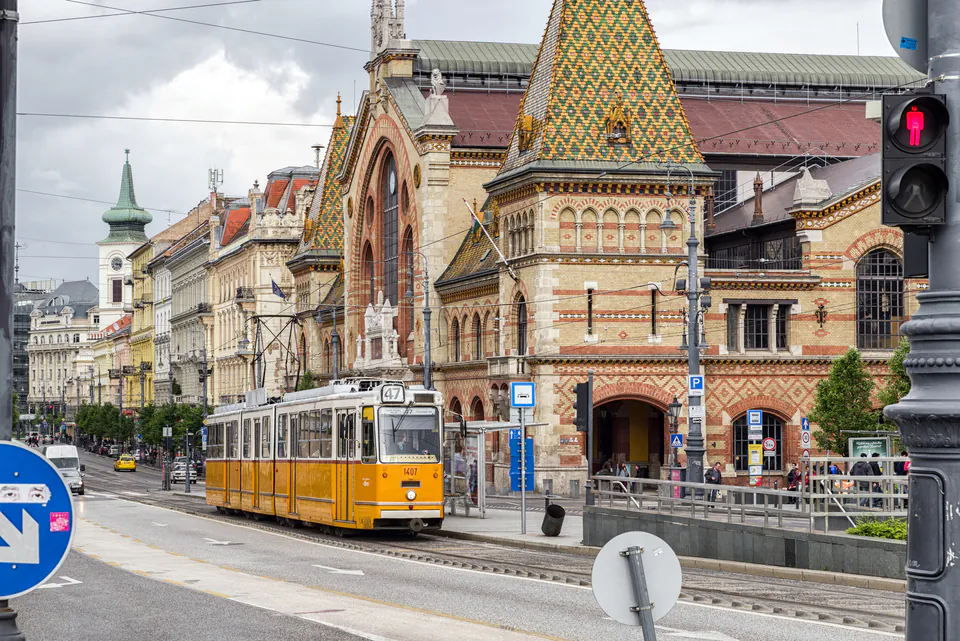
If you're taking the metro, use M4 (green line) to Fővám tér or M3 (blue line) to Kálvin tér and walk a few minutes. It's right at the Pest end of Liberty Bridge and close to Váci utca shopping street, so it fits easily into any Budapest trip. Getting in is free, but using the toilets on the ground floor costs a little bit.
Special Events and Tours
They have guided tours that give you the history and let you taste different foods. We did the Budapest Great Market Hall Food Tour once and it was actually pretty good - you learn stuff you wouldn't figure out on your own.
Those "Tourism Days" we mentioned happen regularly, with different countries featured each week. They've done Persian Days, Polish Days, and others. Sometimes in summer they have concerts inside the market hall, which is pretty cool with all that architecture.
Restaurant Fakanál gives you the full experience with traditional food and live gypsy music every day. If you want the complete Hungarian cultural thing, that's your best bet.
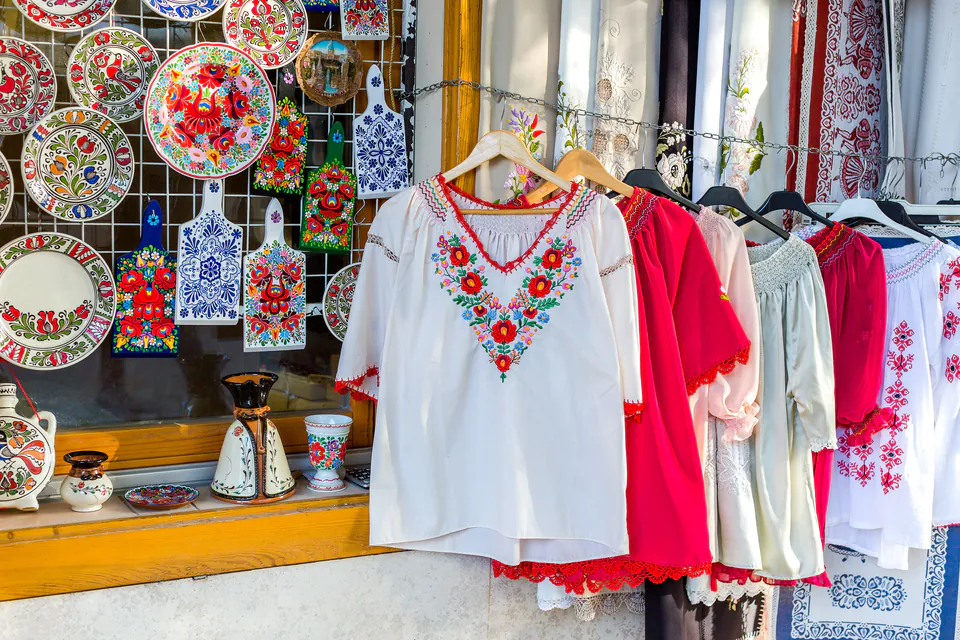
What to Expect (The Good and Bad)
Most people love this place. The architecture is impressive, there's tons of variety, and it feels authentic. Food upstairs is usually affordable and you get to eat with locals, which is cool.
But there are some things to watch out for. Pickpockets work the crowds sometimes, so keep an eye on your stuff. It can get really touristy, especially upstairs. Bring cash (Hungarian forints) because lots of vendors don't take cards - we learned this the hard way trying to buy paprika once.
Use the back entrance if you want to avoid crowds. Souvenir prices can be higher than other places in the city, and the basement smells pretty fishy. In winter, some vendors close earlier than the posted hours.
We've had mostly good experiences here, but knowing what to expect helps. It gets packed during lunch hours, so plan around that if you don't like crowds. You can definitely have a great time without spending a fortune if you're smart about where you shop and eat.